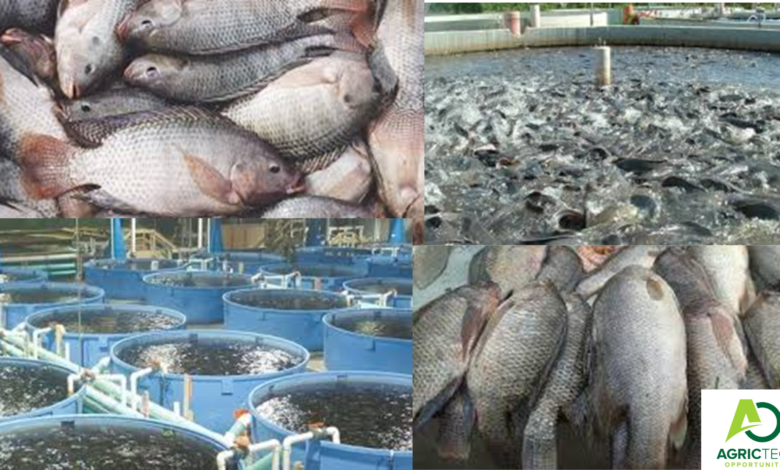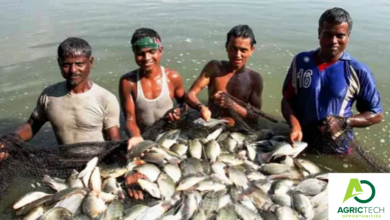Your Key To Success: FISH FARMING (Aquaculture) 2023

Host Country
GLOBAL
Target Audience
INTERNATIONAL FISH FARMERS
Program Overview
Fish farming is a type of aquaculture that raises fish in fish tanks and sells them as food. This is the fastest growing segment of animal feed production. About half of the fish consumed worldwide today are raised in these artificial environments. Commonly farmed species include salmon, tuna, cod, trout and halibut. These ‘aqua farms’ can take the form of wire cages submerged in natural bodies of water or concrete pens on land. Your Key To Success: FISH FARMING (Aquaculture)
Your Key To Success: FISH FARMING (Aquaculture)
ALSO READ: How To Easily Perform Artificial Insemination Technique (AI) In Various Species Of Farm Animals
What is a fish?
A cold-blooded and vertebrate aquatic organism with fins, breathes using gills and the body is usually covered in scales.
Capture fisheries
The harvesting of wild fish populations; commercial fishing. Exploitable by the public as common property resources, with or without appropriate licences.
Aquaculture
Cultivating aquatic populations (such as fin-fish, molluscs, crustaceans and aquatic plants) under controlled conditions (FAO, 1995). Includes intervention in the rearing process to enhance stock. Individual or corporate ownership of the stock.
Other types of fishery activities
Blended fisheries
•natural fisheries enhanced through aquaculture e.g., stocking natural ponds
•Releasing captive-reared juveniles to bolster wild stocks
Recreational fisheries
•Fishing for sport/pleasure/recreation
•Usually through angling – the fishing gear used is rod-and-line
Aquatic species – world
Plants
•algae, seaweed, moss, water hyacinth
Invertebrates
•anelids – hugworm, sandworm
•arthropods/crustaceans – shrimp, crawfish, prawn, crab, lobster, copepod, etc
•erchinoderms – sea urchines
•mollusks – mussel, oyster, octopus, squids
Vertebrates
•Amphibians – frog
•Fishes – char, salmon, catfish, eel, carp, bass, tilapia, paddle, tuna, trout, crawfish
•Reptiles – alligator, crocodile, turtle
ALSO READ: The Ultimate Guide To Rabbit Production- WHY KEEP RABBITS
Importance of fish
1.Employment – 5,000 people directly
2.Household income
3.National income – through exports
•In 2012 Lake Harvest exported 8,010t, valued at US$43 million
4.Nutrition – 17% of the global intake of animal protein, hence improved health; cheap, high quality protein, omega 3 fatty acids and white meat
5.Provide recreation – Rainbow trout (in Nyanga); carp fishing (Lake Chivero) and Tiger (Hydrocynus vittatus) fishing in Lake Kariba and the Zambezi
6.Are of sentimental value – kept as pets
7.Are ornamental – decoration, sight seeing e.g., Aquariums in Victoria Falls
8.Make use of non arable land
9.Makes use of manure on the farm, cutting costs of feed by use of the integrated system
Types of aquaculture
1.Freshwater aquaculture
•Cold-water: commercial raising of stock that thrives in cool, clear freshwater;
•e.g., trout, salmon
•Warm-water: warm, often turbid freshwater;
•e.g., tilapia, carp, bass, catfish
2.Marine aquaculture
•Saltwater aquaculture
•e.g. shrimp, oysters, red drum, seaweed, etc.
Common fish species in Africa
1.Tilapia/bream
•Mocambique Bream (Oreochromis mossambicus)
•Green-headed Bream (Oreochromis macrochir)
•Red-breasted Bream (Tilapia rendalli)
•Kariba Bream (Oreochromis mortimeri)
•Nile Tilapia (Oreochromis niloticus)
2.Cat (Clarinus gariepinus)
3.Common Carp (Cyprinus carpio)
4.Rainbow Trout (Oncorhynchus mykiss)
5.Matemba/Kapenta (Limnothrissa miodon)
O. mossambicus (Mocambique bream)
•Adults are omnivorous
•Becoming extinct due to excessive capture in the Zimbabwe water bodies
•It is a fast growing fish attaining 150g to 350g per year
•Temperature range of 20-35oC
•Mouth brooder
ALSO READ: Top Principles Of Pig Nutrition For 2023/24
O. macrochir (Green headed bream)
•Greenish coloured head
•A mouth brooder
•Its diet is mostly composed of microscopic plants
•e.g., algae
•Ore tolerant to cold water temperatures with its lower limit being 12-13 oC
•Growth is estimated at 150g – 200g per year in fish ponds
Oreochromis niloticus (Nile Tilapia)
•Origin: Nile river in Egypt
•Dark grey lines that run vertical on the fsh’s body
•Warm water species- 22 to 35 degrees Celsius.
•Mouth brooder
•Good growth rate reaches 230g to 500g in 6-12 months
•Omnivorous feeding habits
•Well accepted in the market due to its good taste
•Lake Harvest (Africa’s largest fish farm located in Zimbabwe) breed, farm and export the Nile tilapia around the globe
Tilapia rendalli (Red-breasted bream)
•Reddish orange colour on the ventral part of the or on the breast
•Omnivorous, adults of this tend to feed on higher plant matter
•Predate on other fish and their eggs in the absence of vegetable matter
•Good for pond culture as they can eat grass, vegetables and kitchen wastes
•A slow grower around 100g to 150g per year, high breeding ability
•A substrate spawner
ALSO READ: Approved Principles Of Poultry Production For 2023/24
Life cycle of mouth brooders

Conclusively, today, about half the fish consumed globally are raised in these artificial environments. Commonly farmed species include salmon, tuna, cod, trout and halibut. These “aquafarms” can take the form of mesh cages submerged in natural bodies of water, or concrete enclosures on land.
ALSO READ: The Benefits of Doing an Internship: How It Can Help You Get Ahead in Your Career
For more updates On Agric Tech Opportunities kindly join the social groups below:
Join our Telegram | Follow us on Linkedin | Also, Follow us on Twitter. | Join Our Whatsapp Group
God bless and All the best !!




